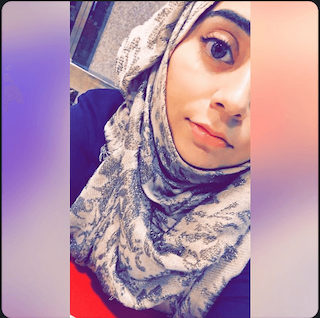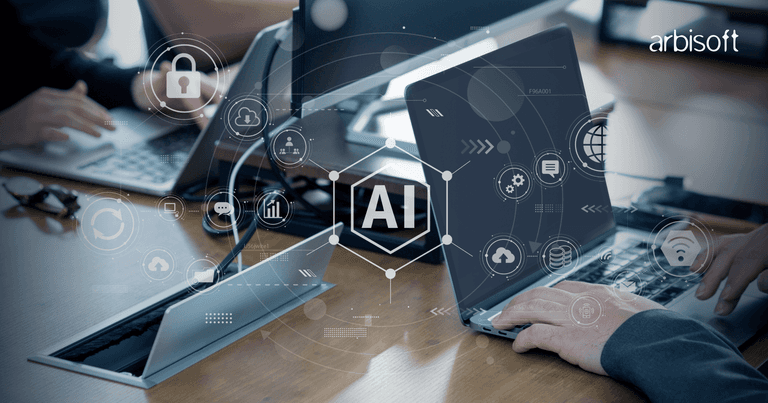We put excellence, value and quality above all - and it shows




A Technology Partnership That Goes Beyond Code

“Arbisoft has been my most trusted technology partner for now over 15 years. Arbisoft has very unique methods of recruiting and training, and the results demonstrate that. They have great teams, great positive attitudes and great communication.”
A Deeper Look at Brain-Computer Interfaces in the 21st Century

Imagine a world where thoughts could control machines. It's a reality brought closer by Brain-Computer Interfaces (BCIs).
The BCI market, valued at $1.8 billion in 2023, is projected to skyrocket to $23.2 billion by 2030, reflecting the growing excitement and investment in this transformative technology.
BCIs have emerged as a groundbreaking field, promising to revolutionize human-machine interaction. At the heart of these systems lie BCI algorithms, the computational tools that decode brain signals into meaningful commands.
This blog will delve into the intricacies of BCI algorithms, the computational tools that decode brain signals and translate them into actions. We'll explore their diverse applications, from medical rehabilitation to gaming and entertainment, and discuss the challenges and future prospects of this exciting field.
Understanding BCIs
Brain-Computer Interfaces are like special ‘tools’ that let your brain connect to computers without using your hands or voice. Imagine controlling a computer game with just your thoughts, or typing a message without moving a finger. That's what BCIs can do! They measure the electrical signals your brain produces and turn them into actions.
BCI algorithms serve as the computational backbone of Brain-Computer Interfaces (BCIs), translating neural signals into meaningful commands. This process involves several critical steps:
1. Signal Acquisition
- EEG (Electroencephalography) - The most common method, EEG records electrical activity on the scalp using electrodes. It offers portability and non-invasiveness but has lower spatial resolution.
- ECoG (Electrocorticography) - This invasive technique involves placing electrodes directly on the brain's surface, providing higher spatial resolution and signal quality. It's primarily used in neurosurgical patients.
- fMRI (Functional Magnetic Resonance Imaging) - fMRI measures changes in blood flow within the brain, indirectly indicating neural activity. It offers high spatial resolution but has a slower temporal response compared to EEG and ECoG.
Did you know?
In recent years, there has been a surge in the development of wearable BCI devices, such as headsets and wristbands that we wear every day, which use EEG to capture brain signals in more convenient settings.
2. Signal Preprocessing
To ensure accurate analysis, BCI algorithms require extensive signal preprocessing. Here’s what is required for accurate signal processing:
- Noise Reduction - Removing artifacts like muscle movements, eye blinks, and environmental noise is crucial for accurate signal interpretation.
- Artifact Correction - Techniques like Independent Component Analysis (ICA) and Principal Component Analysis (PCA) can help isolate and remove artifacts from EEG data.
3. Feature Extraction
Extracting relevant features from the raw brain signals is essential for BCI algorithms to identify patterns associated with different mental states. Here’s how it’s done:
- Time-Domain Features - Analyzing the EEG signal amplitude, frequency, and phase can reveal patterns associated with different mental states. For instance, detecting changes in alpha wave amplitude to determine relaxation or stimulation.
- Frequency-Domain Features - Decomposing the EEG signal into frequency bands (e.g., delta, theta, alpha, beta, gamma) can identify specific brain rhythms related to cognitive processes. This includes analyzing beta wave activity to distinguish between motor imagery tasks (e.g., hand movement versus foot movement).
- Time-Frequency Analysis - Techniques like wavelet transforms can capture both time-domain and frequency-domain information, providing a more comprehensive understanding of brain activity. For instance, identifying transient events, such as event-related potentials (ERPs), associated with specific stimuli or cognitive processes.
4. Feature Selection
Once features are extracted, BCI algorithms select the most relevant ones for classification. Here’s how:
- Dimensionality Reduction - Selecting the most relevant features can improve classification accuracy and computational efficiency. For instance, using techniques like Principal Component Analysis (PCA) to reduce the dimensionality of the feature space while retaining the most important information.
- Feature Engineering - Creating new features by combining or transforming existing ones can enhance the algorithm's performance. For example, creating new features from EEG data, such as the ratio of alpha to beta power, to better discriminate between different mental states.
5. Classification
The final step in BCI algorithms is to classify the extracted features into intended commands using ML techniques. A variety of algorithms can be used to classify extracted features into intended commands, including:
- Support Vector Machines (SVMs) - Classifying EEG data to distinguish between motor imagery tasks (e.g., left-hand versus right-hand movement).
- Neural Networks - Training a deep neural network to decode complex patterns in EEG data for applications like brain-controlled prosthetics.
- Bayesian Networks - Modeling probabilistic relationships between EEG features and mental states to infer intentions or cognitive processes.
- Ensemble Methods - Combining multiple classifiers (e.g., SVMs, neural networks) to improve accuracy and robustness in BCI applications.
Now that we’re familiar with what BCI algorithms are and how they work, let’s get into how they’re used in real-life.
BCI Algorithms aren’t the easiest to understand. Unless you have this nifty graphic to help you!

Discover the fascinating world of BCI algorithms and how they work!

Applications of BCI Algorithms
BCI algorithms have a wide range of applications, from medical rehabilitation to gaming and entertainment. Here are some real-world examples.
1. Medical Rehabilitation
- Restoring Movement - BCIs have been used to help individuals with paralysis regain control over their limbs. For instance, a study published in Nature in 2016 demonstrated a BCI system that enabled a paralyzed man to control a robotic arm using only his thoughts.
- Treating Neurological Disorders - BCIs are being explored as a potential treatment for neurological disorders like epilepsy. By identifying and modulating abnormal brain activity, BCIs may help prevent seizures.
2. Gaming and Entertainment
- Mind-Controlled Games - BCI-powered games offer a unique and immersive experience. For example, companies like NeuroSky have developed EEG headsets that allow users to control characters in the games using their brainwaves.
- Virtual Reality - BCIs can enhance virtual reality experiences by enabling users to interact with the digital world more intuitively.
3. Research and Education
- Studying Brain Function - BCIs are invaluable tools for neuroscientists to study brain function in real time. Researchers can use BCIs to investigate how different brain regions are involved in various cognitive tasks.
- Developing Educational Tools - BCIs have the potential to revolutionize education by providing personalized learning experiences. For instance, BCIs could be used to monitor students' engagement and adjust the learning pace accordingly.
Key BCI Algorithms
BCI algorithms are the computational tools that enable brain-computer interfaces to decode neural signals and translate them into meaningful commands. Several algorithms have played a pivotal role in BCI research over the years, including:
1. EEG-based Algorithms
To analyze EEG signals, researchers have developed various algorithms specifically tailored to the characteristics of this modality.
- Common Spatial Pattern (CSP)
To enhance the separation between different brain states, researchers often employ the Common Spatial Pattern (CSP) algorithm. CSP identifies spatial filters that maximize the variance between two classes of EEG data, such as motor imagery tasks for left and right-hand movements.
- Discrete Wavelet Transform (DWT)
The discrete wavelet transform (DWT) is a powerful tool for capturing transient brain signals. DWT decomposes EEG signals into time-frequency representations, allowing researchers to analyze both temporal and spectral characteristics. DWT has been effective in detecting event-related potentials (ERPs) and other transient brain phenomena.
- Support Vector Machine (SVM)
Support Vector Machines (SVMs) are a popular choice for classification tasks in BCIs. SVMs find the optimal hyperplane to separate data into different classes, making them suitable for binary classification problems in BCI research. SVMs have achieved high classification accuracy in BCI applications, particularly for motor imagery tasks.
2. fMRI-based Algorithms
While EEG is commonly used for BCIs, fMRI offers complementary insights into brain activity.
- General Linear Model (GLM)
The General Linear Model (GLM) is commonly used in fMRI analysis to model the relationship between brain activity and experimental stimuli. GLM assumes that the observed fMRI signal is a linear combination of known experimental designs and underlying neural responses.
- Independent Component Analysis (ICA)
To identify independent sources of brain activity in fMRI data, Independent Component Analysis (ICA) is employed. ICA decomposes the fMRI signal into a set of statistically independent components, which may correspond to distinct neural processes. ICA has been used to identify task-related brain networks and to remove artifacts from fMRI data.
3. Deep Learning
Recently, deep learning techniques have shown great promise in BCI research. Neural networks, particularly Convolutional Neural Networks (CNNs) and Recurrent Neural Networks (RNNs), can learn complex patterns from EEG or fMRI data. Deep learning models have achieved state-of-the-art performance in various BCI applications, including motor imagery and decoding cognitive states.
Challenges and Limitations
Despite their promising potential, BCI algorithms face several challenges.
- Signal Noise and Artifacts - External factors like muscle movements, eye blinks, and environmental interference can corrupt brain signals, making it difficult to extract accurate features.
- Subject Variability - Brain signals vary significantly between individuals, making it challenging to develop algorithms that work universally.
- Ethical Considerations - Privacy concerns, potential misuse of BCI technology, and the ethical implications of mind-reading raise important questions. Ensuring robust cyber security services can mitigate risks related to data privacy and security in BCI implementations.
Did you know?
Researchers are actively working on developing techniques to reduce noise and artifacts in brain signals, such as adaptive filtering and artifact rejection algorithms. A study published in the Journal of Neural Engineering showed that adaptive filtering can improve the classification accuracy of motor imagery tasks by up to 10%.
Future Trends
Here are some of the emerging trends in BCI algorithms to keep an eye out for:
- Hybrid BCIs - Combining EEG and fMRI can provide a more comprehensive understanding of brain activity, leading to improved BCI performance.
- Wireless BCIs - Wireless BCI devices offer greater convenience and portability, making them more accessible to a wider range of users.
- Brain-to-Brain Interfaces - Researchers are exploring the possibility of direct communication between brains using BCI technology, opening up new avenues for collaboration and interaction.
- Ethical Frameworks - Developing ethical guidelines and regulations for BCI research and development is crucial to ensure responsible and beneficial use of this technology.
The Long And Short Of It
BCI algorithms represent a significant advancement in human-machine interaction. By decoding brain signals and translating them into meaningful commands, these algorithms have the potential to revolutionize various fields, from medical rehabilitation to gaming and entertainment. While challenges remain, ongoing research and technological advancements are paving the way for a future where BCIs become an integral part of our lives. There is surely more to see in the future!
























